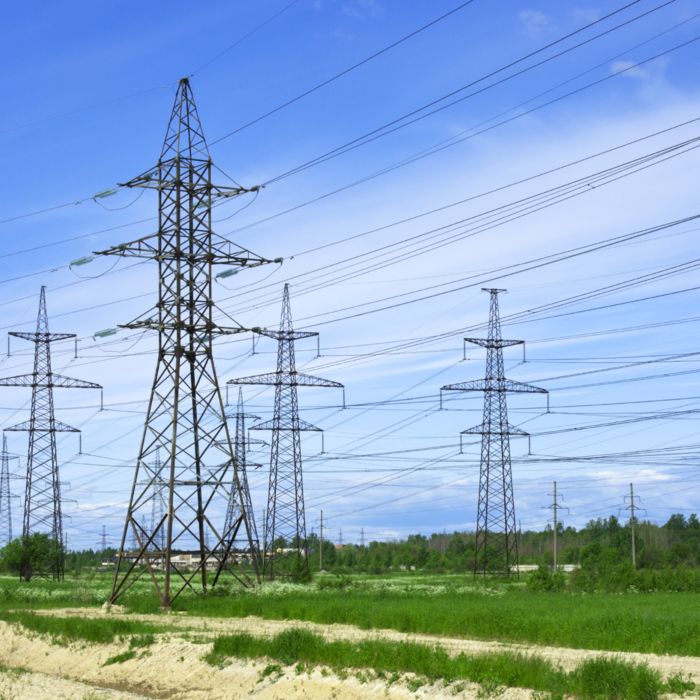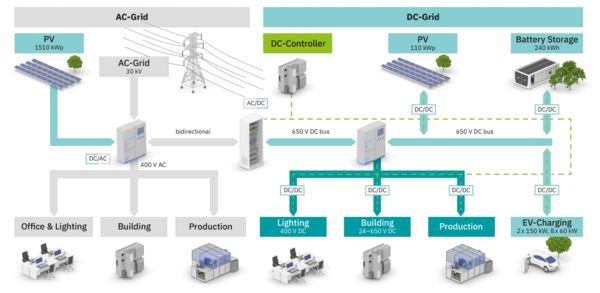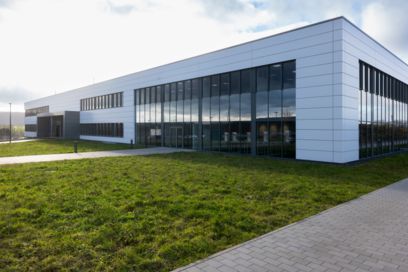In a permanent installation, the 650 V DC grid supplies in-house loads. In addition, branch circuits are supplied from the 650 V DC grid via insulating converters at the 400 V DC voltage level, for example, for lighting and connections for mobile devices. The 400 V sub-DC grids are therefore isolated DC circuits (DC-IT system).
Currently, AC voltage devices in the AC low-voltage level require power supply units with internal rectification and DC intermediate circuits to supply PCs, displays, and LED lighting technology. If these devices are supplied directly from a DC grid, a large part of the weight and volume of the feed-in circuits can be saved.
Personal protection based on DIN VDE 0100-410 is taken into account with the lower voltage in the branch circuits. The IT systems are monitored for insulation and are shut down in the event of an error.
DC branch circuits with CHARX DC-DC converters can be used in high-performance industrial applications. The DIN rail power supplies of the QUINT POWER family can be used wherever a 24 V DC auxiliary supply voltage is required.



















